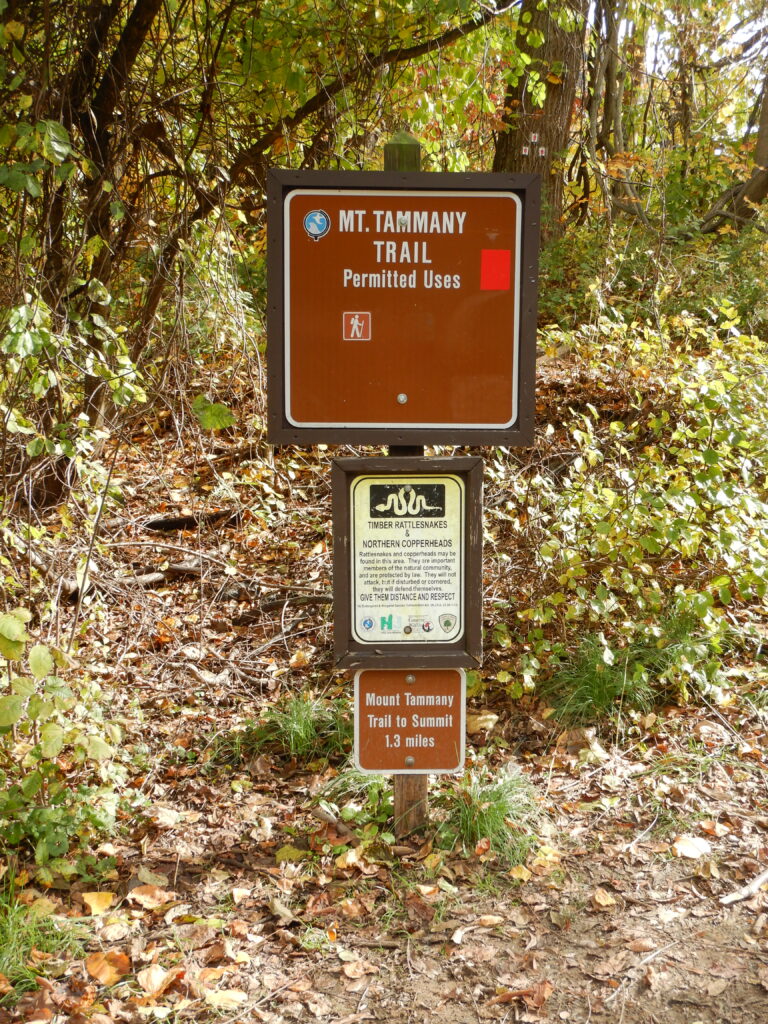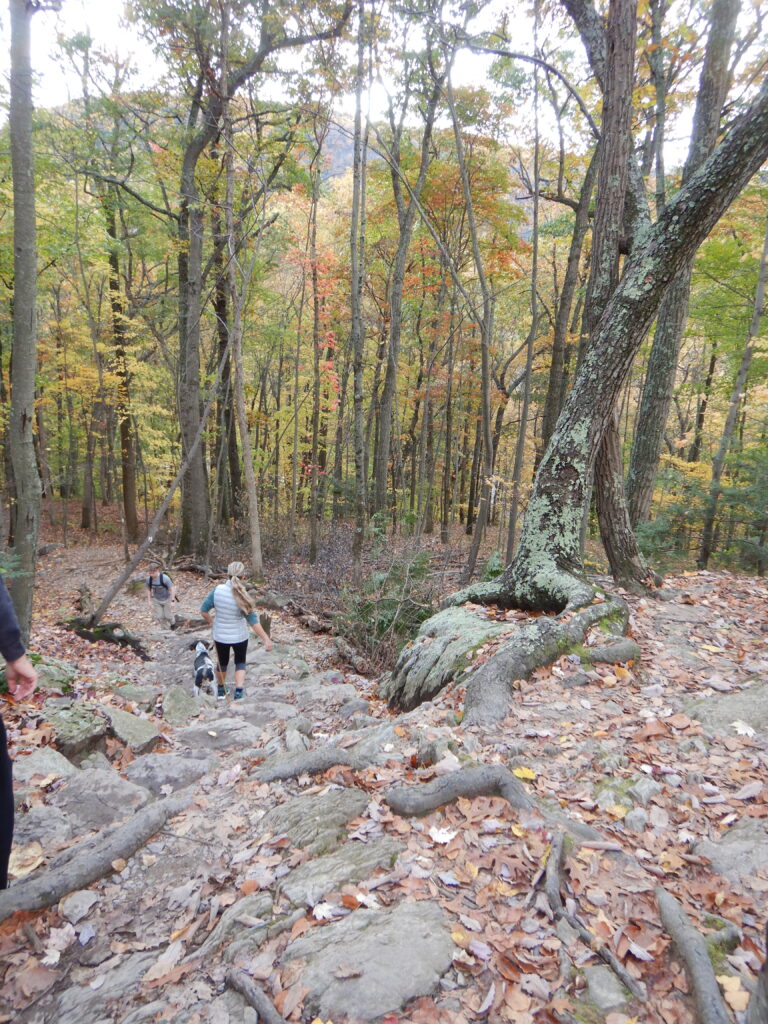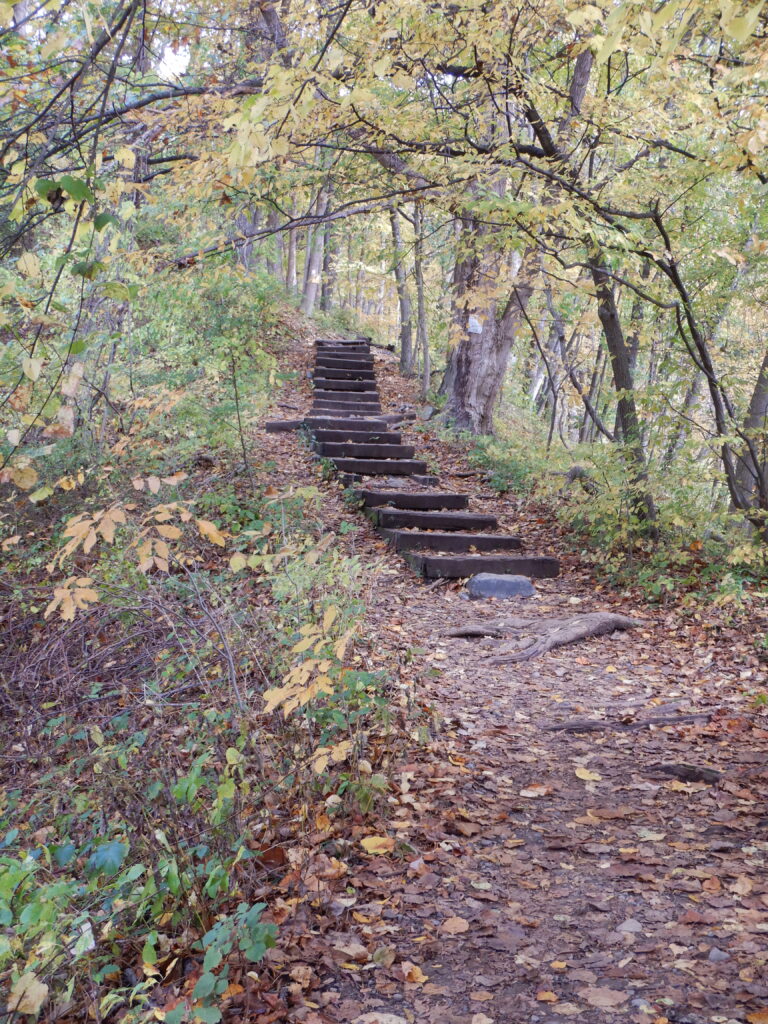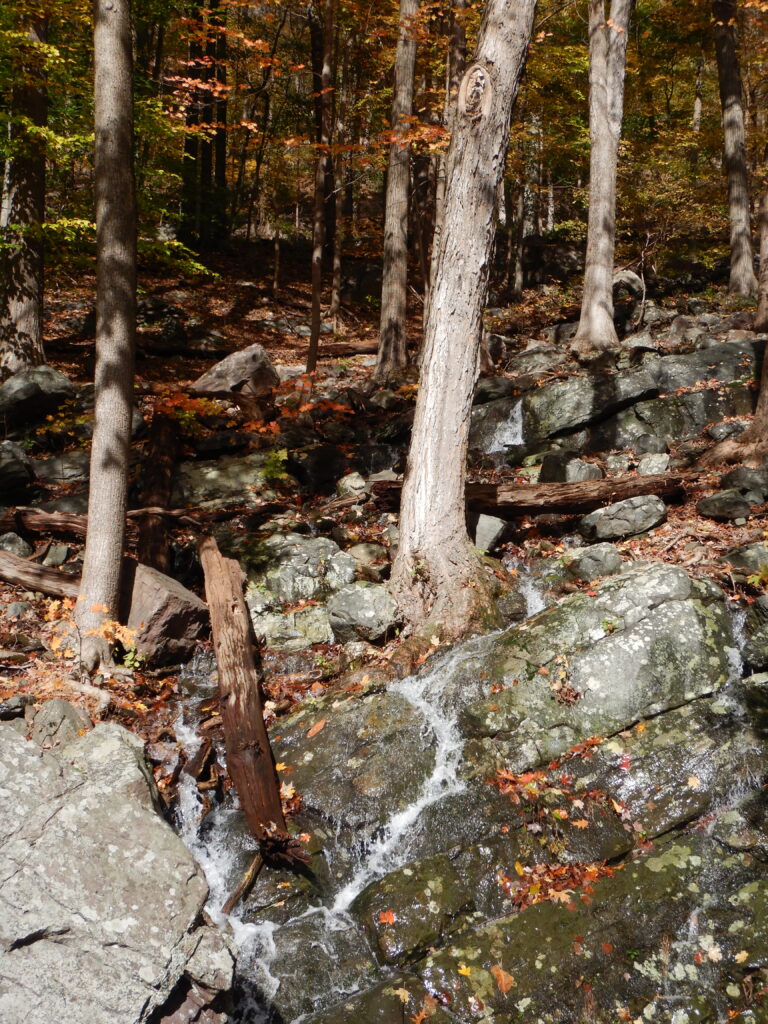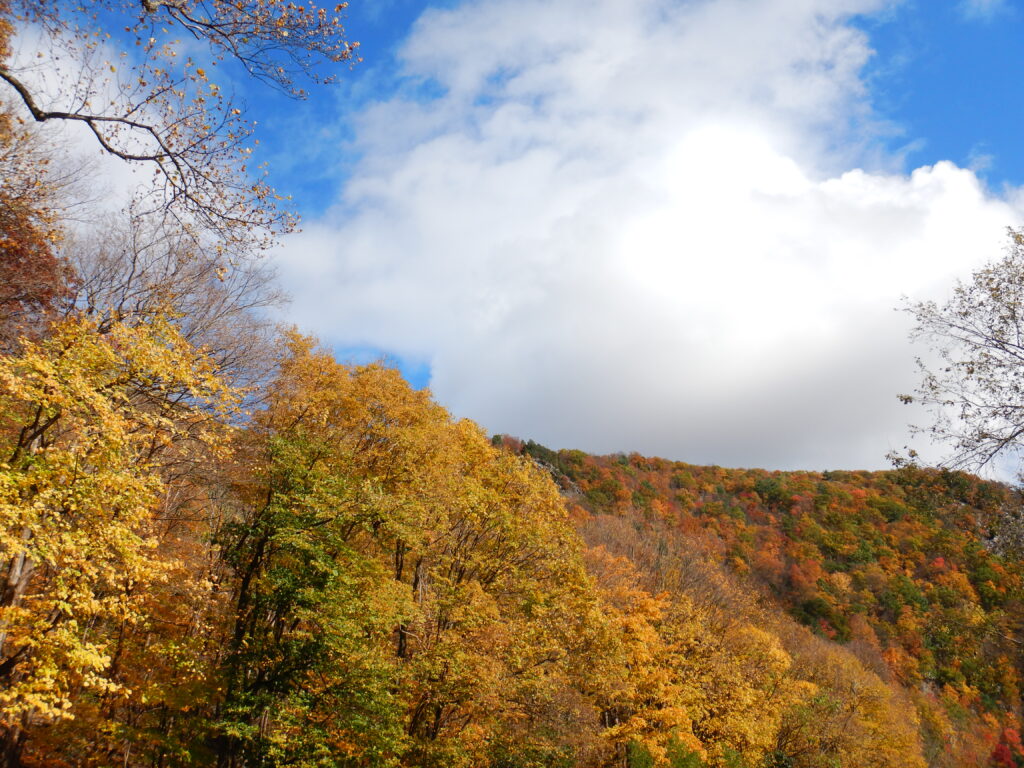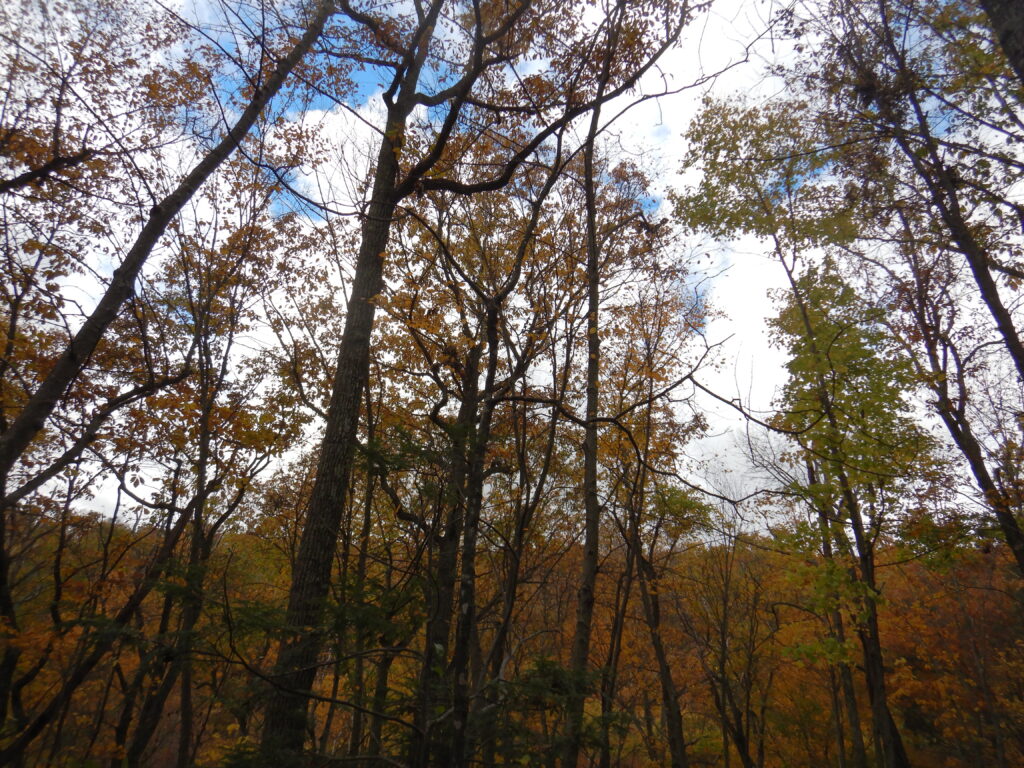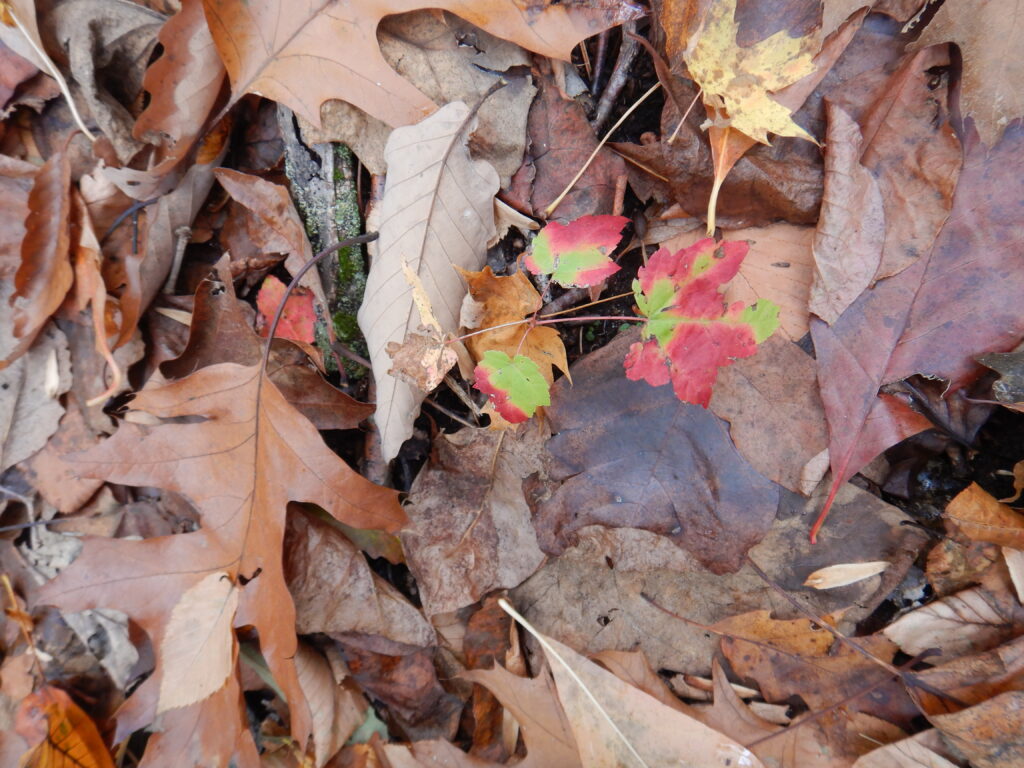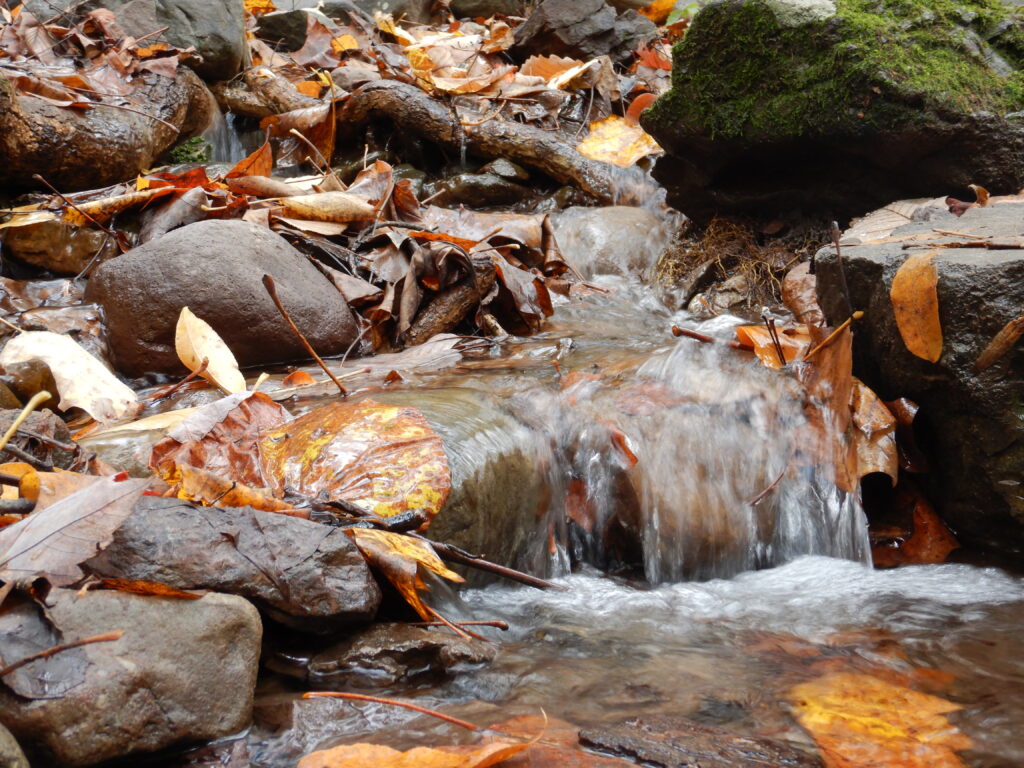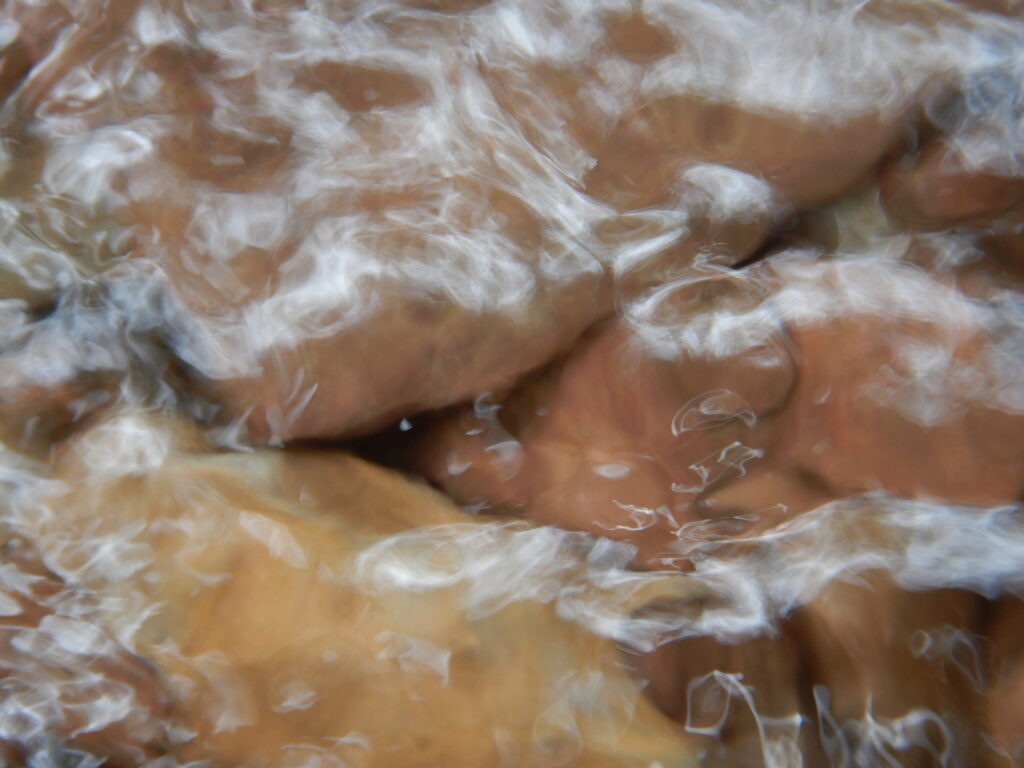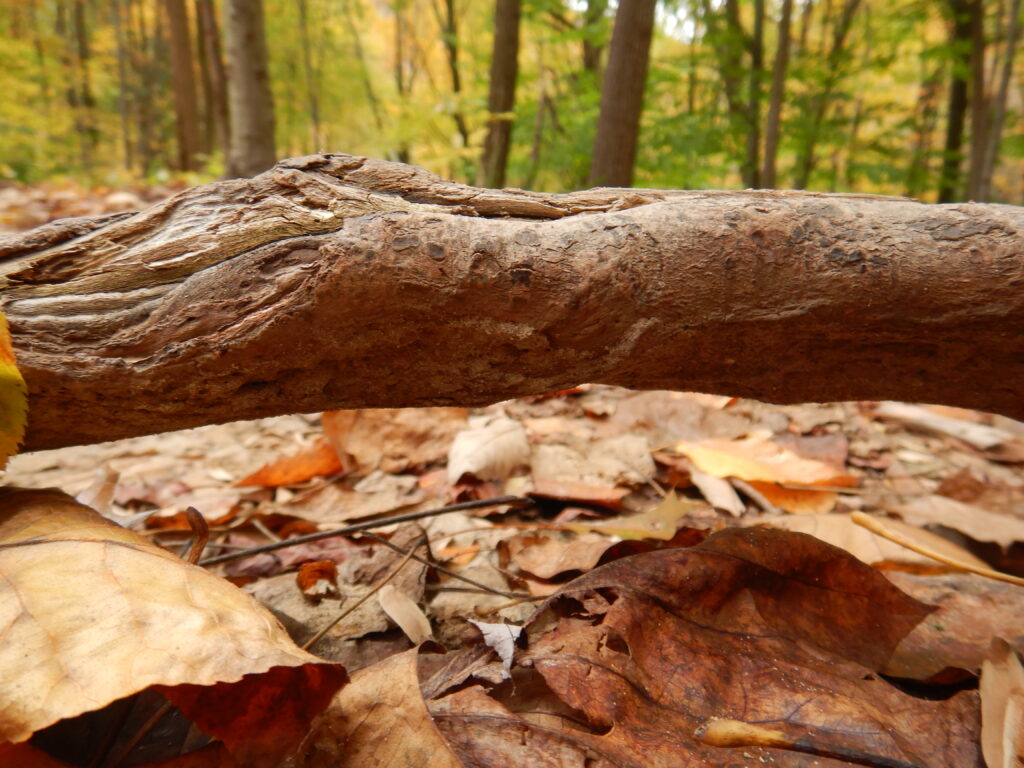
A fall hike and a hiker’s fall
To see fall with new eyes -- sometimes you have to relinquish the goal.
| November 15, 2021
The change from summer to fall is empowering for some and depressing for others as we face snow, ice and shorter, darker days ahead.
But this seasonal transition is nonetheless beautiful and impressive and is on full display in the Delaware Water Gap on the drive to, and hike up, Mount Tammany in Knowlton Township in Warren County in northern New Jersey.
Hikers of all skill levels challenge themselves with this uphill battle every year. Most impressive were those who pushed their limits to reach the top in nothing but topsiders and jeans.
The 3.6-mile trek up the red dot trail to the top of the picturesque mountain is challenging. Hikers can expect to climb rocks and across small streams within the first quarter of a mile, which is all I was able to complete after a series of rain storms made the trail almost impossible on Halloween. If hikers are inexperienced, have children, or are not in the best shape, the best time to visit is when the landscape is dry, or else they may face many trips and falls as I did.
While a quarter-mile out of a 3.6-mile trip is not a lot of progress, the scenery was more than what I expected. My hiking boots were covered in mud and leaves and I took a break from each slip on the rocks to stare at the beauty. I remember learning about leaves changing in school but as I spoke with my fiance about what we saw, I realized I could not remember why Mother Nature dramatically changes our landscape every year.
As I climbed up the trail, the trees were at peak foliage, which differs each year because of weather and environmental conditions, though it usually occurs between the middle and end of October. I tried to remember my early school days and the plant life cycle, though all I was able to recall was a generic definition of photosynthesis and giggle as Spongebob’s photosynthesis dramatics played on repeat. Through photosynthesis, water intake and sun, the leaves act as food manufacturers.
In early spring, as small green buds, the manufacturing begins. Leaves are green because of the pigment chlorophyll, which is encouraged by the sun. With Google in hand and feeling thankful for service, I learned the pigment of chlorophyll allows the leaves to begin the important job of feeding the trees as soon as they begin budding. The leaves’ jobs are to photosynthesize water and carbon dioxide to form sugar to feed the trees and in return produce oxygen. The tree then stores the sugar to prepare for the colder months.
Between the frustration of this wet climb, I heard in the distance freshly fallen leaves crunching in symphonies as children danced amid the laughter of their parents in the park. This made me think about the seasons shifting from long warm days to longer, dark and chilly nights. And I wondered about the purpose of the color change. As we prepare for the first snow with sweaters and mittens, the leaves’ prepare by slowing the production of chlorophyll. Without the need to make food, the leaves begin their awaited metamorphosis. Leaves are not adapted to handle cold weather, which is the main reason for this change.
Covered in mud, thanks to my lack of coordination, I sat on the rocks and stared at the sunset orange, fire red and morning-sun yellow leaves. The color variations stretched far across the canopy as uniquely colored leaves danced to the forest floor. These pigmentations occur as the chlorophyll begins to break down.
Various shades of yellow and orange leaves are created through carotenoids, a pigment present throughout the entire growing season that protects the chlorophyll in leaves from solar radiation. The pigment carotenoids are present in animals and plants. In humans, carotenoids are present in the retina.
Bright and deep red leaves are created by the pigment Anthocyanin, which is present during the autumn season, which also encourages pollinators and seed dispersers and also protects the trees from abiotic and biotic stress. Anthocyanin also provides apples, cranberries and flowers their red color. Abiotic stressors are hostile to plant growth and development through excessive water, heavy metals and ultraviolet radiation. Biotic stressors can increase infection through bacteria, viruses and insects.
We sat at the picnic tables eating our Wawa hoagies and laughed as others followed suit to not finish the climb. Most of those who turned around were not dressed for the hike, or the season really. My fiance and I joked that they turned around because they saw two experienced hikers doing so.
After lunch, I sat in front of the bottom of the waterfall that met the parking lot, taking photos and returning to Google. To me, everything that occurs in our natural world has a benefit to the ecosystem.
In the forest, fallen leaves act as organic fertilizer and soil stabilizer. As leaves continue to break down on the forest floors, nutrients enrich the soil and benefit overall plant life. In addition, the piles of leaves protect the floor from erosion as winter rains pummel the forest that was once protected by a green canopy. The leaves also act as an insulator to the soil and organisms that live beneath from freezing as the snow falls.
While we did not complete the hike, the experience was not a bust. In fact, I learned more about the Delaware Water Gap’s ecosystem than I may have if we made it to the top. I am excited to complete the hike in the spring, after the soil dries and the trees begin budding, renewing life to the forest and beginning the process all over again.

